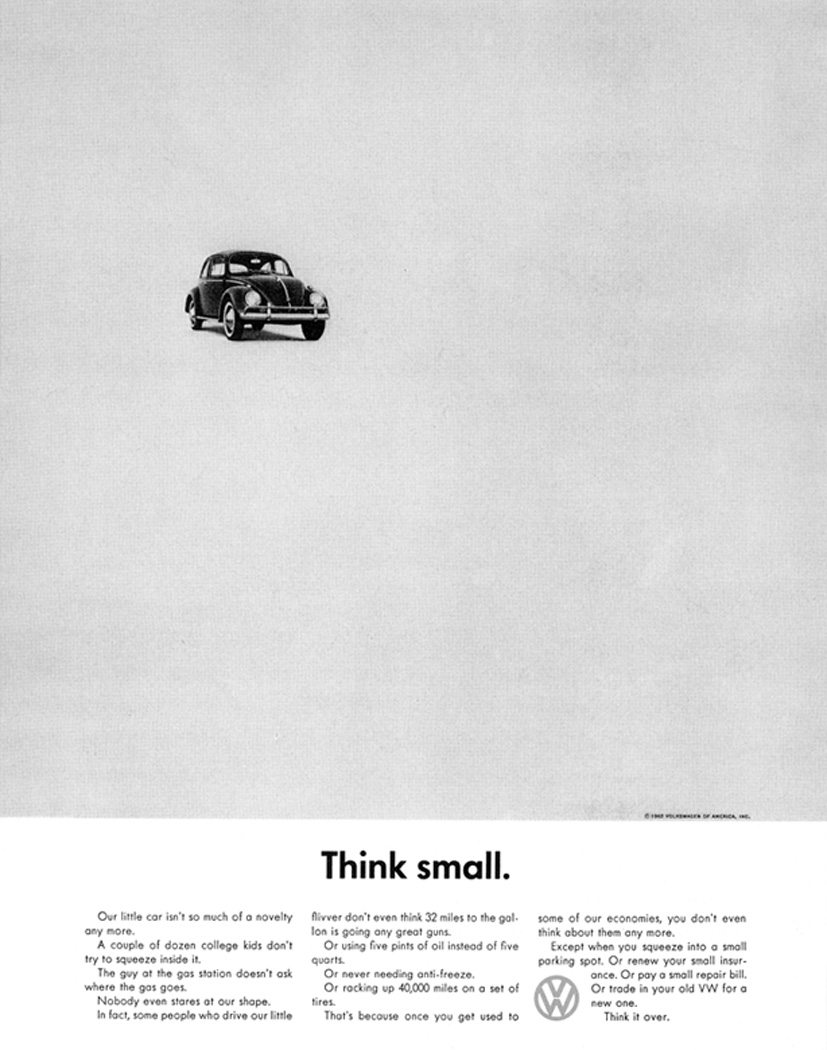The art of the writer will vary according to the individual and must vary according to the subject matter. You do not write a dissertation in the same manner as you write a love letter. Least I hope not. So far, so obvious.
Copywriting is a singular discipline. It has a very specific objective and very targeted audience.
The copywriter is given a brief which is the distillation of mass of information on the product, the market and consumer. The good copywriter will not necessarily accept the brief at face value but will get to grips with the data themselves.
However, I digress. I am not talking of writing ads. But copy. Purists of English grammar will, at this point, be already writhing in agony. Take an aspirin, pour yourself a vodka martini and read on.
The function of copy is not to be beautiful literature. It is to sell. And the fact is most copy that is written for ads is never read. Less than 5% of the total possible readership will actually do so. (The figure may be inaccurate, nonetheless it is marginal.)
I once wrote a series of ads that got 98% readership. However, it was a campaign on an exceptional topic, the first major information campaign on AIDS in this country. (It was the worst copy I ever wrote as it was so mangled by the UK government Cabinet sub-Committee who had the final say.)
The astute reader will note what is written here is not good copy. Too many digressions - not to mention a little showing-off.
So when you sit down to write your copy your first consideration must be that your audience are not going to be vastly interested in what you have to say. If you are lucky, they will scan your text.
And the word 'text' is very apt. Because copywriters have been doing the equivalent of texting for years. The best carefully hone short, sharp sentences. Or condensed non-sentences. Between eight and twelve words is ideal. Written in a style that reflects the product qualities. Yet is witty and carries the reader effortless through the points that must be made.
This piece is over-fractured to make a point and, more than likely, has caused you to stumble once or twice. But then you read a blog differently to the way you read an ad.
The eye skips through ad copy and a good copywriter tries to write with a rhythm that eases its progress.
The first copywriter to invent this style of copy, and one that didn't eulogise the product beyond the bounds of credibility, indeed, effected the reverse, was Bill Bernbach, founder member of Doyle Dane Bernbach in 1949.
This is typical of the hype of American automobile ads in the fifties.
Then Bill arrives on the scene and, in 1959, introduces America to how advertising will shape up in the future (or should shape up) with this ad for the Volkswagen Beetle.
The copy reads:
Our little car isn't so much of a novelty any more. A couple of dozen college kids don't try to squeeze inside it.
The guy at the gas station doesn't ask where the gas goes.
Nobody even stares at our shape
In fact, some people who drive our little flivver don't even think 32 miles to the gallon is going any great guns.
Or using five pints of oil instead of five quarts..
Or never needing anti-freeze.
Or racking up 40,000 miles on a set of tires.
That's because once you get used to some of our economies, you don't even think about it any more.
Except when you squeeze into a small parking spot. Or renew your small insurance. Or pay a small repair bill. Or trade in your old VW for a new one.
Think it over.
It was revolutionary. And, though the art of the press copywriter is now near dead, it can still teach much to those who now write on-line content.




3 comments:
Copy-writing would seem to those that don't know to be a somewhat pre-Twitter format, but more concise and informative. Yet, it is so much more. Thanks for the reminder.
Copywriting has played a very important role in the search engine marketing scene. Copywriting skills are uncommon for webmasters.
Copy Writing is indeed an art. It takes time and dedicated effort to be good at it.
Post a Comment